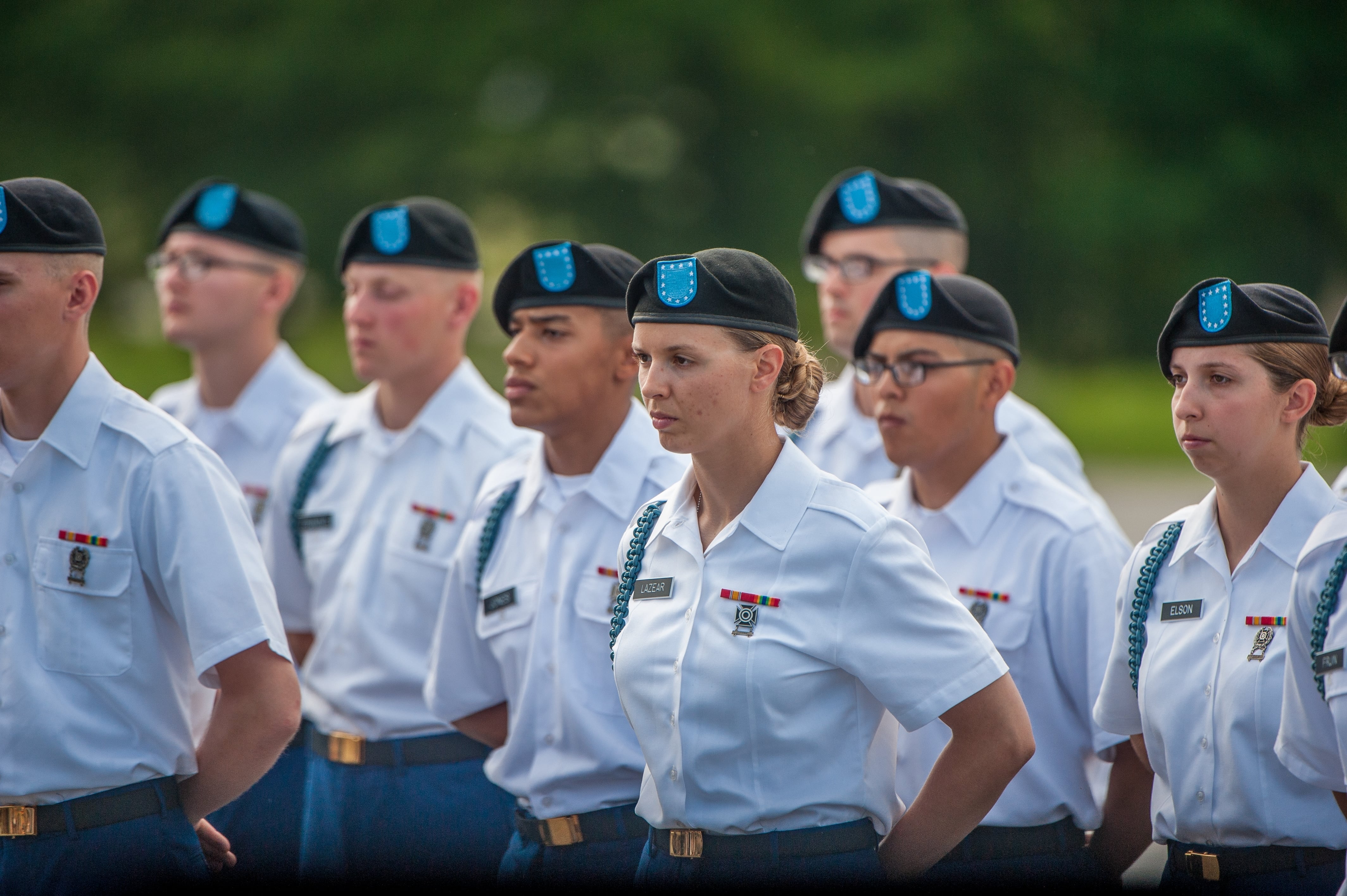FORT BENNING, Ga. — Things are looking a little different on Sand Hill these days, and it's not just the coiled hair or the female drill sergeants screaming at recruit formations.
When the 198th Infantry Brigade welcomed its first gender-integrated class back in February, months of research and planning had gone into preparing one of the Army's last all-male environments for the arrival of the first women to enlist in the service's largest military occupational specialty.
"There hasn't been any light bulb moment of surprises," Capt. Seth Davis, a One Station Unit Training company commander, told Army Times on April 30. "Female gender integration is new to the infantry branch, but it's not new to the Army."
Officials across the Army, all the way up to Sergeant Major of the Army Dan Dailey, had similar things to say — that the Army has been training men and women together and deploying them together for decades, and this move is largely business as usual.
But gender integration was a long fight, and, at every step, detractors within and outside the Army argued that women weren't physically up to the challenge. Some argued that women's unique medical needs would disqualify them, or throwing them into such a macho culture would damage unit cohesion.
"I've heard that story of, 'Women have been in combat.' That's a true statement — all of these statements are, in and of themselves, true statements," Maj. John Spencer — a former senior enlisted infantryman, one-time Ranger school instructor and current strategy expert at West Point's Modern War Institute — told Army Times. "But the statements are false in that women have not been integrated into these small units with the role of direct action, which creates its own subculture."
Thirty-two women reported to the first integrated infantry OSUT, where they were assigned to 1st Battalion, 19th Infantry Regiment.
On May 19, 18 of them graduated, earning their blue cords.
"These basic trainees are going to have to establish themselves and be judged, just like everybody else," Spencer said. "They can’t be upset they’re being judged, because the males are going to be judged the same. Sometimes there’s an extra perception added onto it [because of their gender], but everybody’s being judged on whether they’re weak or not."
In the spotlight
The Army officially lifted the ban on women serving in the infantry and armor branches at the end of January 2016, and by the end of the year had rounded up a handful of female noncommissioned officers and newly trained infantry officers to establish integrated chains of command based at Fort Bragg, North Carolina, and Fort Hood, Texas.
All they’re missing now are the female joes, hundreds of whom are scheduled to go through basic training at Fort Benning this year.
Women began enlisting as soon as the 11X infantry recruit MOS opened in April, and their stories went public.
Still, taking lessons from the 2015 integration of Ranger school, leaders were careful not to add too much pressure to the historic infantry OSUT class.
"Some of the things we’ve done in the past, we’ve brought a lot of attention," Dailey said. "I wanted to make sure we don’t disadvantage anyone by bringing that attention, and we’ve done very good at it this time."
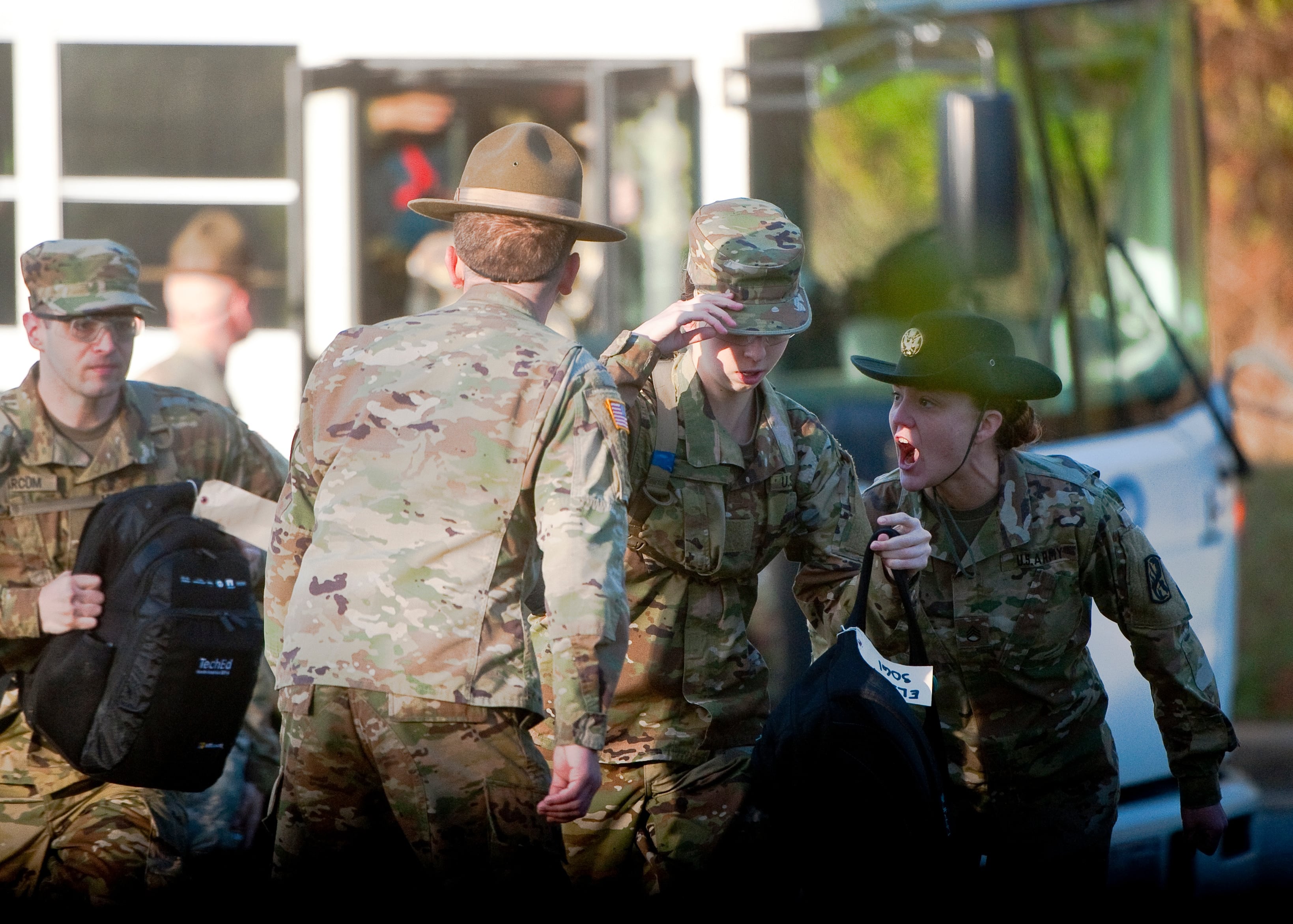
Soldiers-in-training assigned to A Company, 1st Battalion, 19th Infantry Regiment, start their first day of Infantry One Station Unit Training on Sand Hill, Fort Benning, Ga. The class that started Feb. 10 was the first to include female recruits.
Photo Credit: Patrick A. Albright/Army
Officials speculated that recruiters might have told the men or women that they were headed to the first integrated cycle, but couldn’t specify a time when anyone was briefed on the significance of their time at basic.
"At the in-brief, other than them looking left and right, I did not mention that," said Lt. Col. Samuel Edwards, commander of 1st Battalion, 19th Infantry Regiment. "I did not change that in-brief."
Starting at the top
For as long as a year before the women arrived, female drill sergeants were getting comfortable at Fort Benning, helping recruit battalions smooth out the final wrinkles while preparing themselves to lead grunts.
Sgt. 1st Class Karen Carter, who joined the Army as a culinary specialist before re-classing to intelligence analyst, arrived in January 2016.
"At first, I’m not going to lie, I was kind of surprised about getting orders for drill — and then finding out [I was going] to come here," she said. "I feel like we’re the face of the Army. We’re the first ones that they see when they come into the Army, the military. So just being here in OSUT world, it’s an honor."
Carter is one of a handful of female drill sergeants, one assigned to each platoon, and she got to cut her teeth with several cycles of all-male platoons before women arrived in February.
The training is the same, she said, as is the way she treats them. All of the leadership make it a point not to single out the women.
"I don’t think it’s a major change, but it’s something historic," Carter said. "They don’t really talk about it. Surprisingly, they actually just want to train. They understand that they are the first ones, but they’re not concentrating on it."
The only thing different might be the advice they get about packing, she said.
"We’re going to the field, hey, you might want to take some wipes," she said. "But everything else, it’s the same."
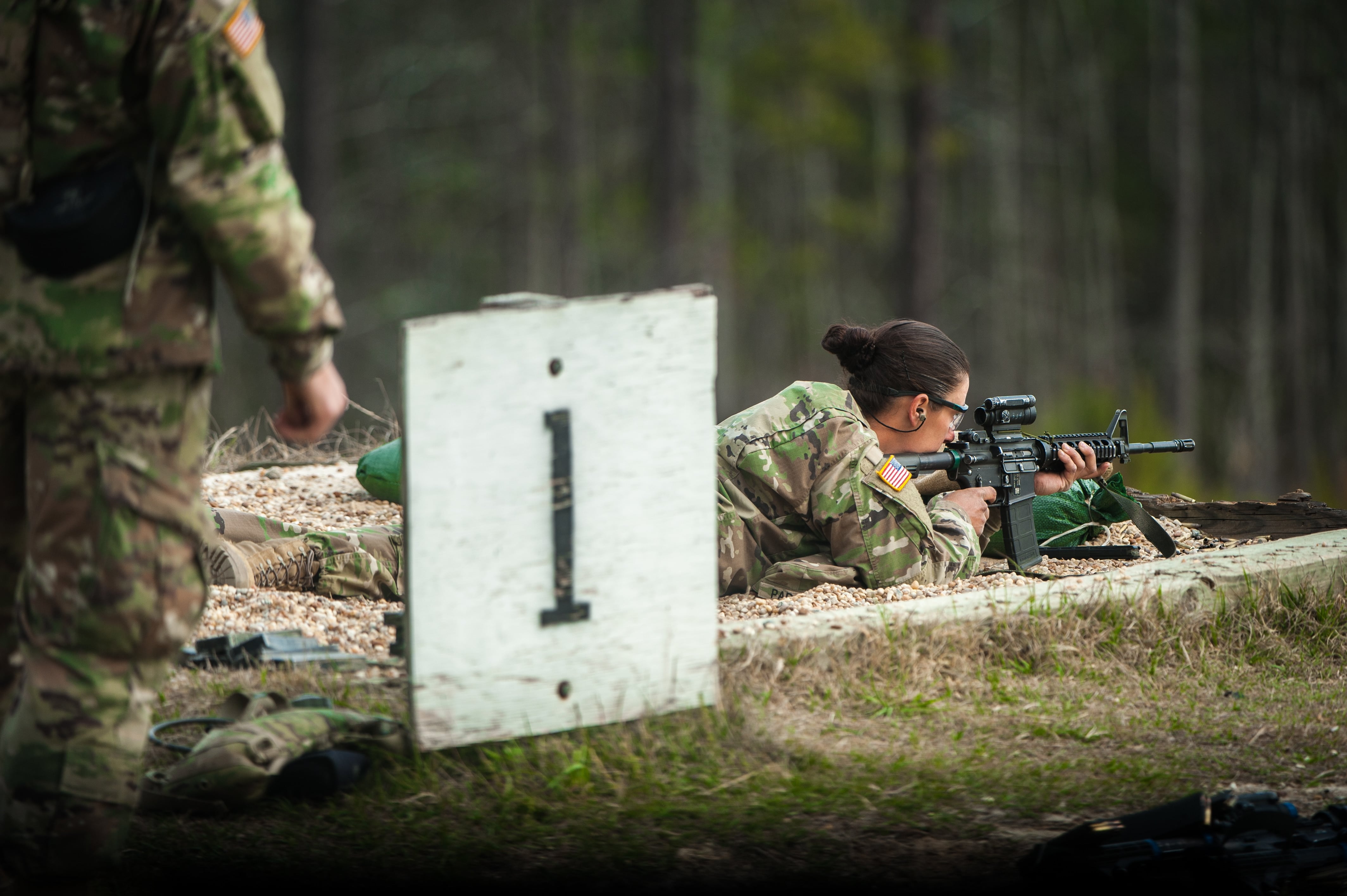
New soldiers conduct basic rifle marksmanship training at Fort Benning, Ga.
Photo Credit: Patrick A. Albright/Army
Carter and her fellow female drill sergeants were sent to Fort Benning as part of the Army’s "Leaders First" initiative, to provide seasoned role models so that female recruits have women to look up to, but also so that the men get used to the idea of being led by women.
"The best way is setting the example," Carter said. "A lot of them, they’re new to all these ruck marches. Or running. So me or one of the other female drills getting out there, climbing ropes, running, doing all the ruck marches, we’re setting that example and being that leader that they’re trying to look for."
It seems to be working, she said.
"I have a female that runs to anything," she said of one squad automatic weapon gunner, who stands at barely 5 feet tall. "She always wants to help, she always wants to train."
In her experience, she said, the women don’t need any more help than the men do, nor do they complain more.
"You know, I really expected that, but I didn’t get anything," she said. "They cry about their feet hurting, and it’s males and females. It’s the same thing. They miss home. Everybody gets homesick."
In the details
In the same way the Army’s other basic training posts are integrated, men and women on Sand Hill spend about 16 hours a day side by side.
Their only segregated time is in the barracks, from about 8 to 9 p.m. every night, where they study and prepare for the next day before lights out.
At 4:30 a.m., they’re up again, with a few minutes to brush their teeth and get dressed before they’re back in formation.
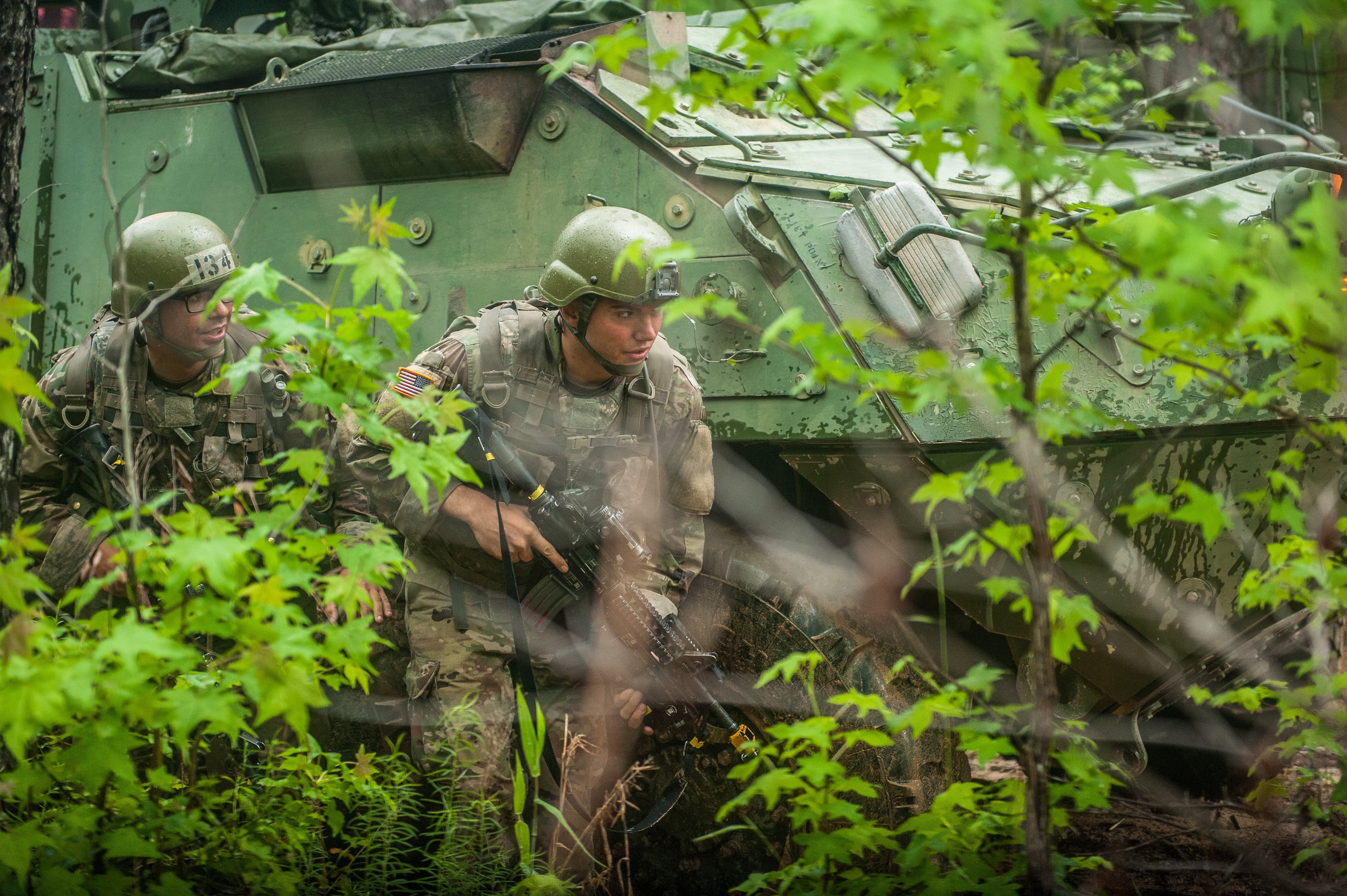
Infantry soldiers-in-training prepare to engage the opposing force during a squad training exercise May 2. The women are the first new enlisted recruits to go through Infantry One Station Unit Training.
Photo Credit: Patrick A. Albright/Army
Leaders at Fort Benning consulted basic training units at Fort Jackson, South Carolina, and Fort Leonard Wood, Missouri, which have been integrated for decades. They also reached out to the British and Canadian armies, Edwards said.
Early on, they realized they were going to need a bigger barracks. The battalion solved that by moving its two companies to a new building, with enough space to designate a room for women.
They also needed enough female drill sergeants so that there is always a woman on staff duty, as well as security cameras recording the hallways and entrances to the building.
The battalion started the cycle with 32 women out of 180 total recruits. Each company set aside a female-only bay or barracks room, and, to start, eight women were assigned to each platoon.
Both in the barracks and out in the field, the differences are subtle, but they’re there.
Pink and purple running shoes are lined up on top of wall lockers in the bays. There were a handful of ponytails and braids mixed in on April 30, when the battalion headed out to a range for their first field training exercise.
Hair is generally the easiest way to tell men and women apart in a combat uniform, but that would be deceptive for these recruits.
A handful of the women chose to follow the men’s regulations and shave their heads, leaders said. They look identical to the men in their formation, until they speak.
"That would be the difference, but the training is the same," said Sgt. 1st Class Joseph Sapp, a drill sergeant. "They’ve just been driving on. They carry what everyone else carries. They walk the same amount of mileage. They push, they pull, they sweat, they bleed just like everybody else."
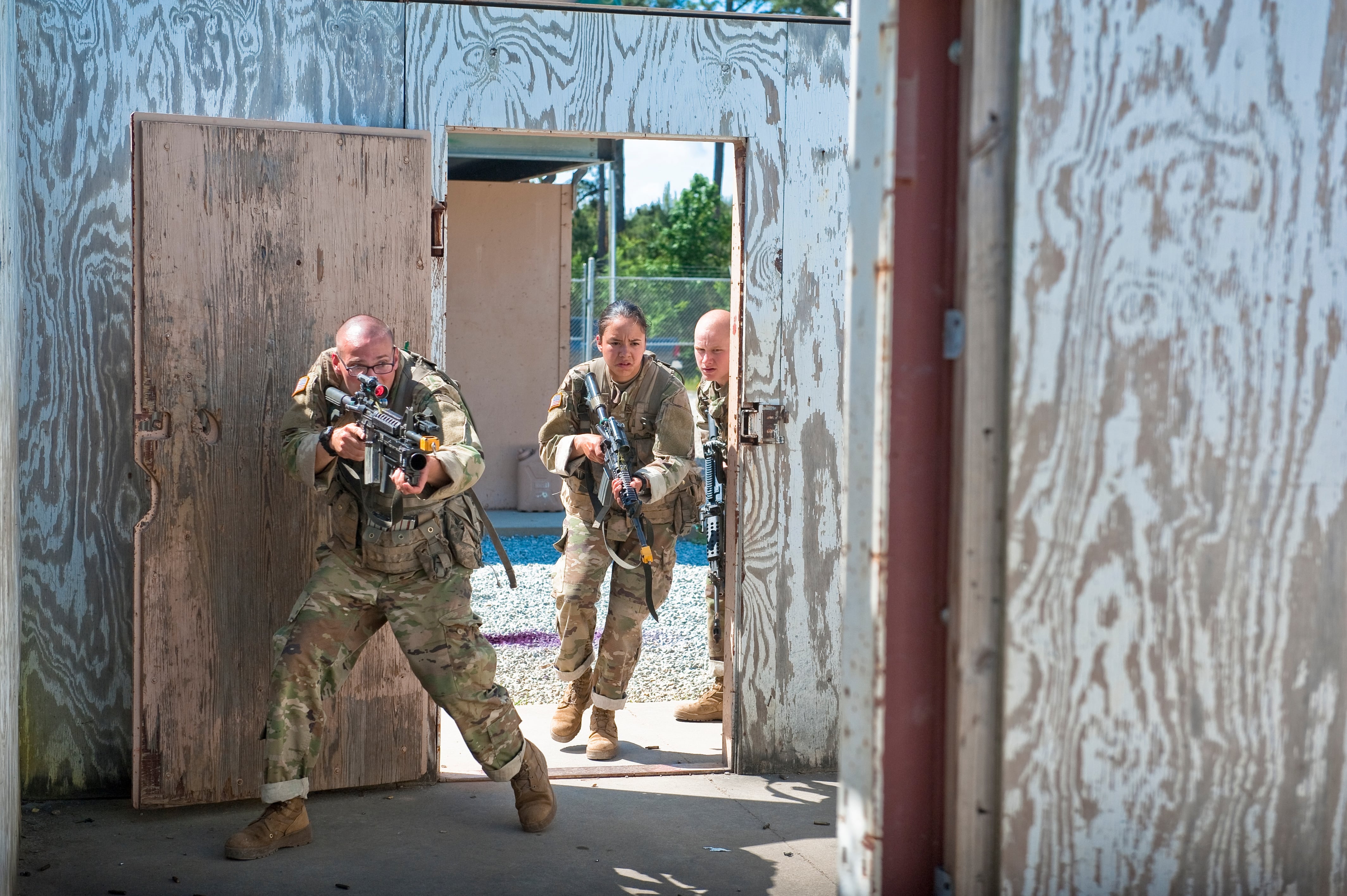
Infantry soldiers-in-training conduct close quarters battle training at Fort Benning, Ga. The Infantry One Station Unit Training class graduating on May 19 was the first to include female recruits.
Photo Credit: Patrick A. Albright/Army
For the culmination of their basic skills training and the first chance to put all of their new knowledge to the test, the soldiers spent a week dug into foxholes in the middle of the Georgia woods, braving 90-degree temperatures, torrential downpours and a tornado on post.
There are portable restrooms on the road for them to use, Davis said, and on foot marches, the new rule is that men relieve themselves on the left side of the path and women on the right.
"Push far enough into the trees that you can’t be seen, and do what you have to do," Davis said.
At night, drill sergeants make the rounds to make sure everyone is actually sleeping, while 30 percent to 50 percent of each platoon is on watch.
"The way we train them during the day, the idea is to get them so tired that when they’re executing the night training, [sleep is] all they want to do," Davis said. "I think we’re doing a good job, because one of the biggest problems we have is, when the drill sergeants are out patrolling at night, is finding people asleep."
Trial and error
On top of being the first gender integrated cycle, the February 2017 class also was the first to have completed the Army’s new, gender-neutral Occupational Physical Assessment Test.
The test features four events and is designed to level the playing field for assessing new recruits. Recruits have to score a certain number of points on the events in order to qualify for some of the higher-demand MOSs such as infantry.
Leaders universally hold up the OPAT as putting new recruits on equal physical footing on day one.
"There’s no separation at all. In infantry, you don’t separate. You don’t say, ‘Okay, she’s a female soldier, she can do a little less,’" said 1st Sgt. Oleg Lerner, the senior enlisted soldier for A Company, 1st Battalion, 19th Infantry Regiment.
It was too soon to tell whether OPAT affected injury or attrition rates, leaders said, but the first integrated cycle’s statistics were about on par with those at Fort Jackson and Fort Leonard Wood, where about 10 percent of men and 25 percent of women drop out.
"Just like the male population, you have some that come here very physically fit, and some who do need a little extra help," Davis said. "You have remedial training for when that happens, but no different than the average male soldier, to tell you the truth."
By early May, the 32 women in 1st Battalion, 19th Infantry had dwindled to 18, Davis said.
"We have attrition rates, both male and female, that are historic with [similar] MOSs," Dailey said. "These are the highest attrition MOSs for the Army, and from talking to other armies, they are higher for women."
Soldiers left Fort Benning — for a variety of reasons, from family issues to injuries and simple failure to adapt to military life — in similar numbers as they did when the battalion was all-male.
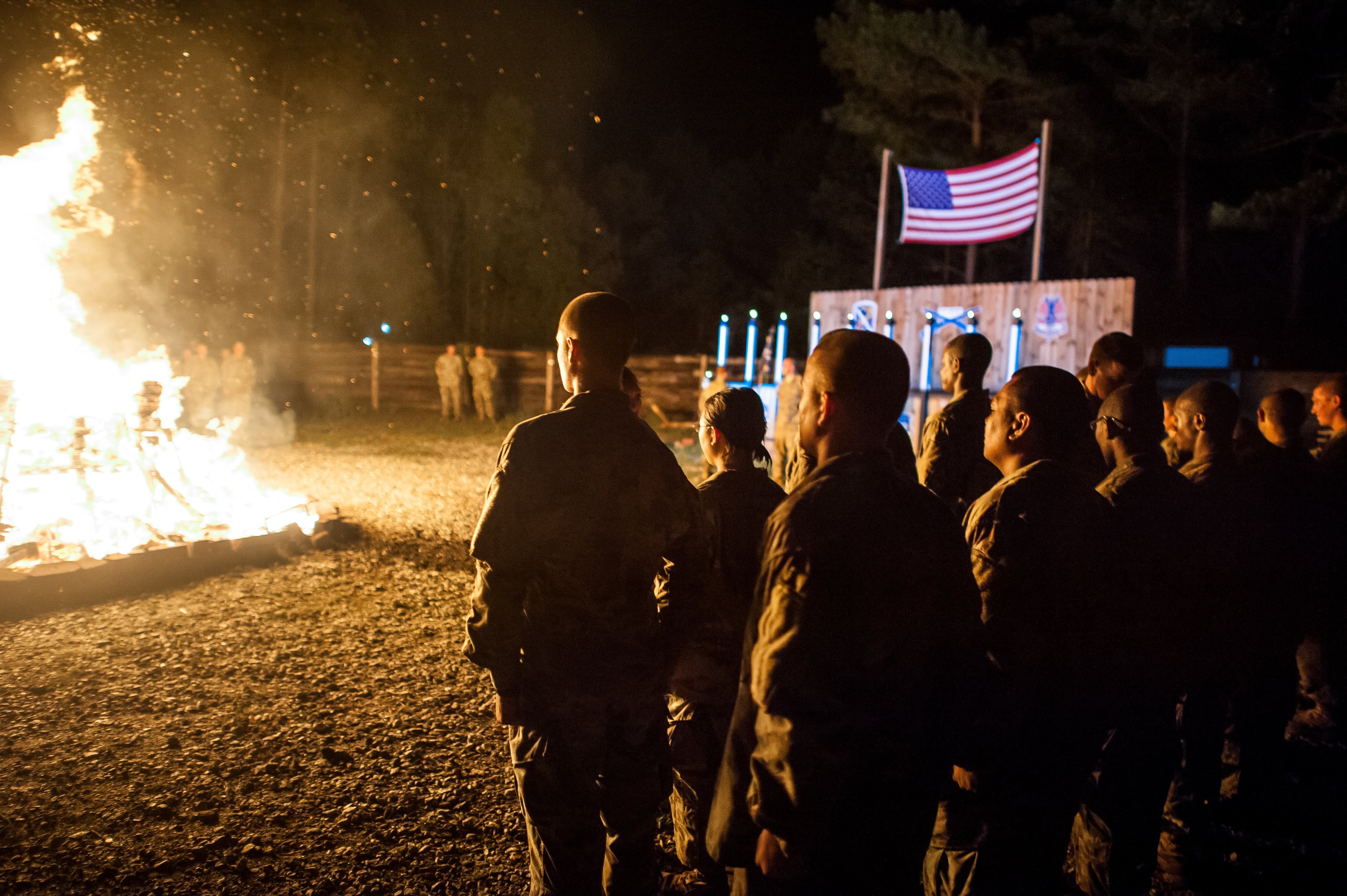
Infantry soldiers-in-training conduct their "Crossed Rifles Ceremony" after completing their culminating field training exercise on May 5 at Fort Benning, Ga.
Photo Credit: Patrick A. Albright/Army
'It's on the men'
For the recruits, this is the only Army they’ve ever known.
The key to a successful integration, Spencer said, is fostering a culture that sees women as capable — from the recruits who bring their preconceptions with them to the NCOs and officers who are dealing with the change in real-time.
"My growing up as a 17-year-old kid coming into the infantry, that type of culture is passed on," Spencer said.
He deployed as a platoon leader during the Iraq invasion, he said, where two female medics were attached to his all-male company.
"Soldiers not on patrol wanted to go talk to them," he said. "Not knowing better, it was like, ‘Don’t do that. That’s a distraction.’ When it’s just soldiers talking to soldiers."
He also offered an example of a female officer who didn’t want to be seen talking to male officers, because of the rumors that spread when she did.
It’s lower-level leadership’s job to set the example, Spencer said.
"There are some things that matter to us more than other cultures, and that has nothing to do with gender," he said. "It’s weakness. The culture does not like weakness. Weakness doesn’t have a gender bias."
Spencer, who has written multiple opinion pieces for publications including the Los Angeles Times and War on the Rocks, has said that he once believed that infantry was a man’s job and should stay that way.
"I definitely brought it in from society. We all go through things that shape what we think the military’s going to be and what war’s going to be," he said. "I came into the military that way, and it just got reinforced in a very male-dominated, alpha — where strength is the biggest thing, and physical fitness is so important because it has to be."
Experience changed his mind, he said.
"Some of that faded away," he said. "That wasn’t necessarily what mattered in achieving the mission."
Going through the repeal of "don’t ask, don’t tell" primed his opinion.
"I was in an organization that said that was going to destroy our culture, to let a homosexual into that organization. And it didn’t happen," he said. "All of the things that they say now about women — the evidence is now that it didn’t, because those things don’t matter when it comes to kicking in the door."
Women graduating Ranger school was another step toward gender parity, he said, because more than half of the soldiers who attempt it fail.
"That’s where some people’s sense of identity begins to crumble, when they see — they came into the organization with thoughts about females being weak, and all of a sudden they meet one who’s not, who has more status within this subculture than they do," he said.
And while it’s up to the women to meet the standards, he said, it’s the Army’s job to pick the right women and to set the conditions for them to succeed.
"The opposite of resisting this is to throw the doors wide open and look for the confirmation bias," he said, by failing to recruit the best women and give them the best support, then saying, "I told you so," when years have gone by and only a handful are still infantrymen.
"The hurdles are not gone, and that’s why this integration has to be closely watched," he said.
It’s too soon to tell whether the integration will be successful, but Dailey said he has a future benchmark in mind.
"If you want to ask what Sgt. Maj. Dailey’s definition of success is — 20 years," he said. "When we have a battalion command sergeant major and a battalion commander, female, leading [an infantry] battalion. That’s what it took in the Canadian army. Twenty years. That’s what it takes a male to do it."
Meghann Myers is the Pentagon bureau chief at Military Times. She covers operations, policy, personnel, leadership and other issues affecting service members.
